
- Home
- India
- World
- Premium
- THE FEDERAL SPECIAL
- Analysis
- States
- Perspective
- Videos
- Sports
- Education
- Entertainment
- Elections
- Features
- Health
- Business
- Series
- In memoriam: Sheikh Mujibur Rahman
- Bishnoi's Men
- NEET TANGLE
- Economy Series
- Earth Day
- Kashmir’s Frozen Turbulence
- India@75
- The legend of Ramjanmabhoomi
- Liberalisation@30
- How to tame a dragon
- Celebrating biodiversity
- Farm Matters
- 50 days of solitude
- Bringing Migrants Home
- Budget 2020
- Jharkhand Votes
- The Federal Investigates
- The Federal Impact
- Vanishing Sand
- Gandhi @ 150
- Andhra Today
- Field report
- Operation Gulmarg
- Pandemic @1 Mn in India
- The Federal Year-End
- The Zero Year
- Science
- Brand studio
- Newsletter
- Elections 2024
- Events
Forced to walk 3-4 kms for firewood, women of a Gujarat village make own fuel

Jagrutiben Samanthbhai Parmar, a 36-year-old dairy farmer of Mukhuva village of Ankalav taluka in Anand district used to walk three to four kilometres to fetch firewood for cooking every alternate day. Mukhuva is a remote village that lacks cooking gas pipeline and LPG distributors among other basic amenities.Rekhaben Mer, another dairy farmer from the same village, has a similar story to...
Jagrutiben Samanthbhai Parmar, a 36-year-old dairy farmer of Mukhuva village of Ankalav taluka in Anand district used to walk three to four kilometres to fetch firewood for cooking every alternate day. Mukhuva is a remote village that lacks cooking gas pipeline and LPG distributors among other basic amenities.
Rekhaben Mer, another dairy farmer from the same village, has a similar story to tell. Women of the village had to walk three to four kilometers at least twice a week in search of firewood for cooking or buy firewood at Rs 400 to 500 per 20 kilograms from the village market.
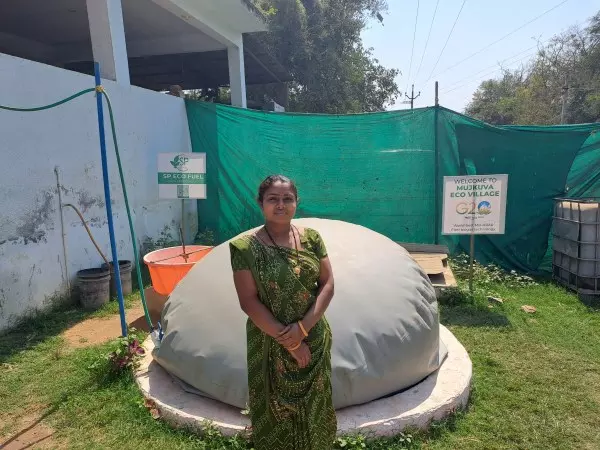
Jagrutiben Samanthbhai Parmar infront of her biggas plant. Photos: On arrangement
“Only a handful of well-to-do families could afford LPG connection in our village as the cylinder had to be brought from Anklav taluka headquarters. There is no distributor in our village or even two neighbouring villages. All of us women used to walk to the vaadi (cluster of trees) to fetch wood. On an average, each woman would carry back three to four kilograms of chopped wood that would last two to three days at the most,” says 40-year-old Rekhaben, whose husband, a landless farmer used to be sole earner in the family of six.
“So, we would ideally make two to three trips a week for firewood. The whole process was exhausting and took the entire day — chopping, tying them in bundles and carrying them back. The wood needed to be dried for one day before we could use them as fuel. It burnt our eyes and the smoke made it difficult to breathe, yet for 20 years women in our family have used firewood. We had no other option,” she added.
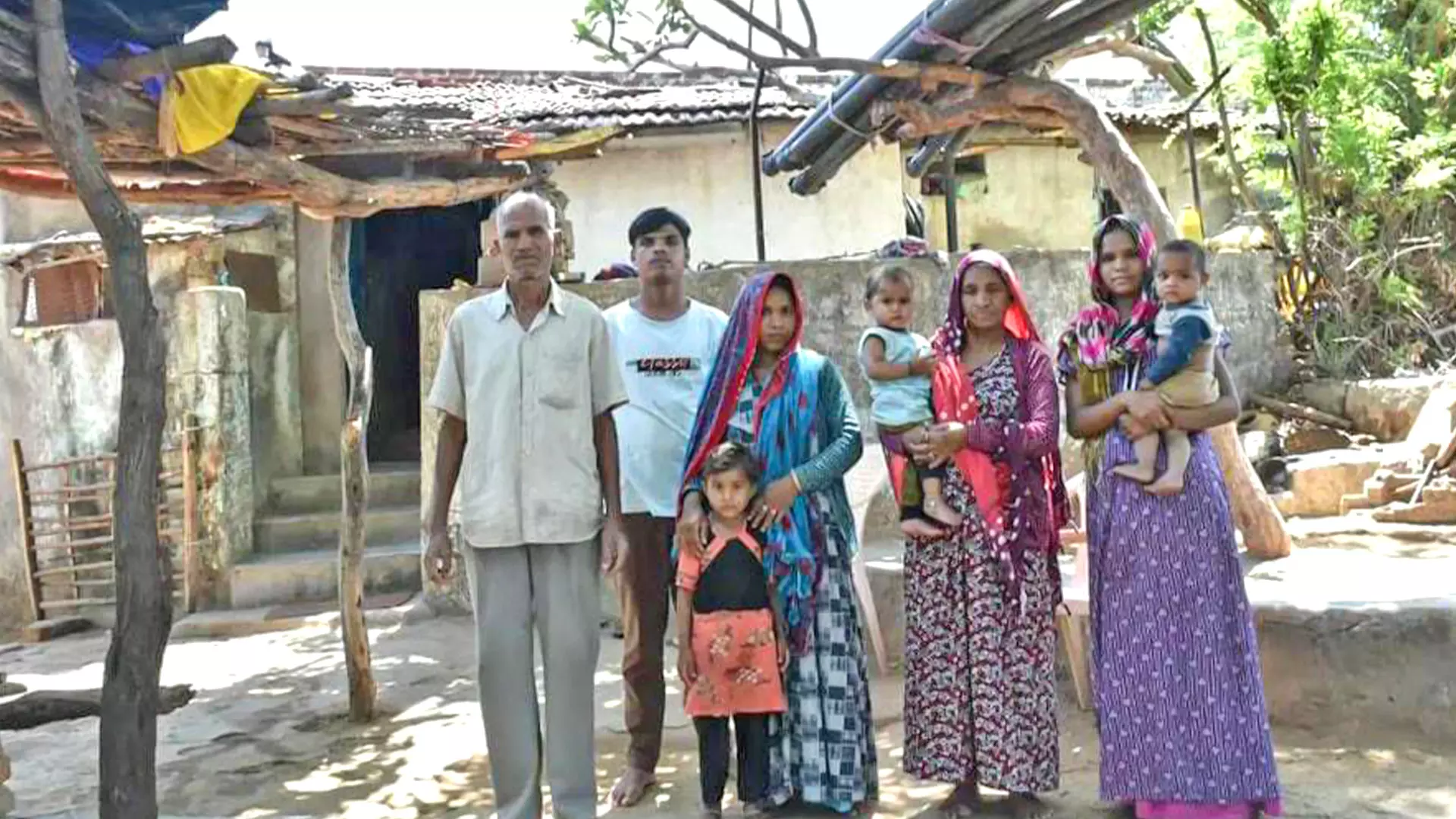
Komalben with her family.
This was the situation until the women of Mukhuva village decided to take matters in their own hands.
Women no longer have to fetch firewood. It has been two years that women of the village use fuel from the bio gas plant of their home set up through an all women cooperative of the village — Sakhi Khad Sahkari Mandali.
“It all started in the year 2020. I used to work for National Dairy Development Board (NDDB) in Anand. The plant used to buy milk from dairy farmers of Zakhariyapura, a village neighbouring Mukhuva in Anand district. One day I was surprised to know that the plant buys cow dung from the dairy farmers as well. I found out that the cow dung was being used to produce fuel. That day I came back home and shared the information with some other women of the village. We were all intrigued and wanted to learn more about it. Almost every household of our village has cattle and disposing the cow dung is in fact a hassle, especially during the monsoon. We then got to know if the cow dung could be made useful, it would solve all out problems in one go,” Jagrutiben says.
“We often made cow dung cakes mixing it with hay to use it as a cooking fuel. But we had never heard of any other usage of cow dung. We were all very intrigued by what Jagrutiben had told us. We all had the same thought that if we could do this at our homes, then it would solve so many of our problems,” says Komalben, who is one of the members of the Sakhi Khad Sahkari Mandali.
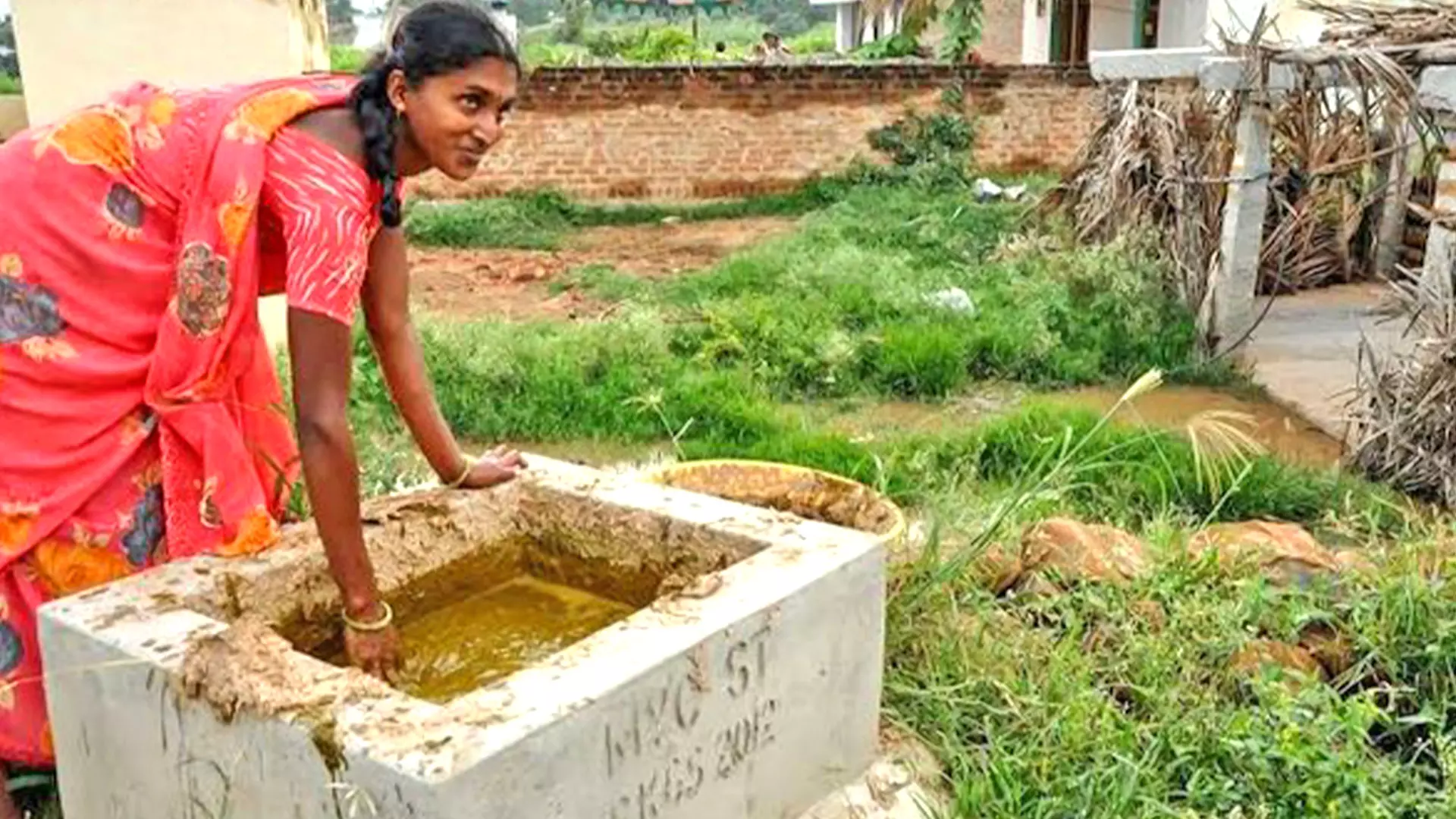
Komalben at her biogas plant.
Three women of the Mukhuva village — Jagrutiben, Komalbel and Rekhaben — decided to meet officials of NDDB to learn more about the biogas plant.
“That week we took out time to go to NDDB plant along with Jagruti who had already spoken to her supervisor about meeting us. The officials were very helpful. They facilitated meetings and educational visits for us to observe flexible biogas units in an adjacent village Zakhariyapura. They pateintly explained to us in details how they produced fuel from cow dung that was enough to run the entire milk processing plant. We were inspired to bring a similar model to our own village but none of us had the money to set up the plant,” shares Komalben.
“It was at this point that NDDB officials suggested we from a cooperative and take a loan. That’s how we formed the all-women cooperative — Sakhi Khad Sahkari Mandali. There were five women — Jagrutiben, Rekhaben, Sonaliben Rathod, Champaben Parmar and I — who started it. Now, there are over 150 women associated with the cooperative, she adds.
In October 2020, Dilip Rath, then chairman of NDDB sanctioned 50 biogas plants of 2 cubic metre strength for women dairy farmers of Mukhuva village. By 2022, the first biogas plant was set up at the village.
“After surveying the households in Mukhuva, NDDB agreed to grant a two cubic metre biogas plant to every cattle owning household. Those households with two to three cows or buffaloes can easily run the flexible biogas plants at full capacity,” Meenesh Shah, the chairman of NDDB, tells The Federal.
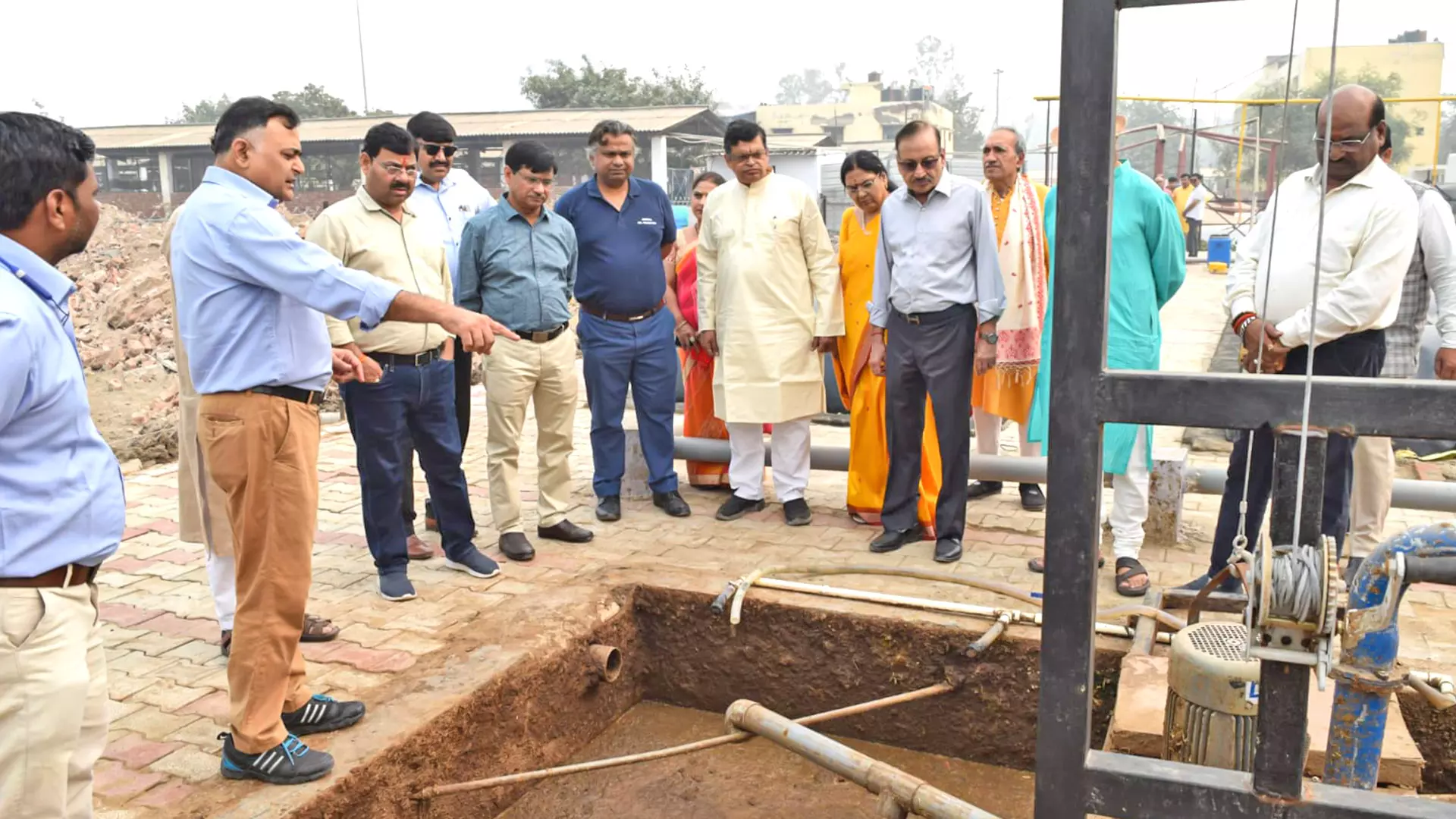
NDDB officials putting up first biogas plant.
“In a typical biogas facility, cow dung undergoes anaerobic (without oxygen) digestion by bacteria to produce biogas comprising 50-55 per cent methane and 30-35 per cent carbon dioxide. This gas can be used as direct cooking fuel and can effectively replace traditional sources such as wood and fossil fuels like LPG. Adding to that, these flexible biogas plants are portable, easy to install and require minimal maintenance. These flexi biogas plants have proven to be more cost-effective compared to conventional biogas digesters our plant has used earlier,” he added.
Jagrutiben Parmar’s household got the first biogas plant in the village two years ago. The biogas plants have not only ensured women don’t have to venture afar in search of firewood but also provided a solution to managing cow dung.
“The biogas plant came at a cost of Rs 15,000 in 2022 that each of us received as loan from the government. The cost of setting up a plant was between Rs 30,000 and Rs 32,000. NDDB paid half of it while we contributed the remaining. The installation company along with NDDB officials conducted a series of training sessions to educate women on plant operation and maintenance. Within a year, 150 households that had at least two to three buffalos or cows got biogas plant in their backyard,” Jagrutiben tells.
“Until the installation of biogas, we were using firewood that caused health hazards despite the availability of cow dung. In fact, it was difficult to dispose of the dung from four buffaloes with each of them producing 15-20 kilogram on an average daily. Now it all goes into the plant. The plant is not that big and most households have enough space to accommodate the plant near the cow shed. We put 50 litres of water and an equal amount of dung into the plant that produces enough fuel to sustain a family of five or six,” she says.
“I no longer walk to the vaadi for wood. To add to that, we earn an extra amount by selling the slurry that is the waste product of the biogas plant. The monthly revenue from slurry sales typically ranges from Rs 1,500 to Rs 2,500. In total, the biogas system helps households save between Rs 3,500 and Rs 4,500 per month with income from slurry and savings from not buying firewood,” Jagrutiben adds.
Noticeably, the biogas plant was set up in the village with the support of the National Biogas and Manure Management Programme (NBMMP) of the Union Ministry of New and Renewable Energy that also provided the loan to the women cooperative of Mukhuva village.
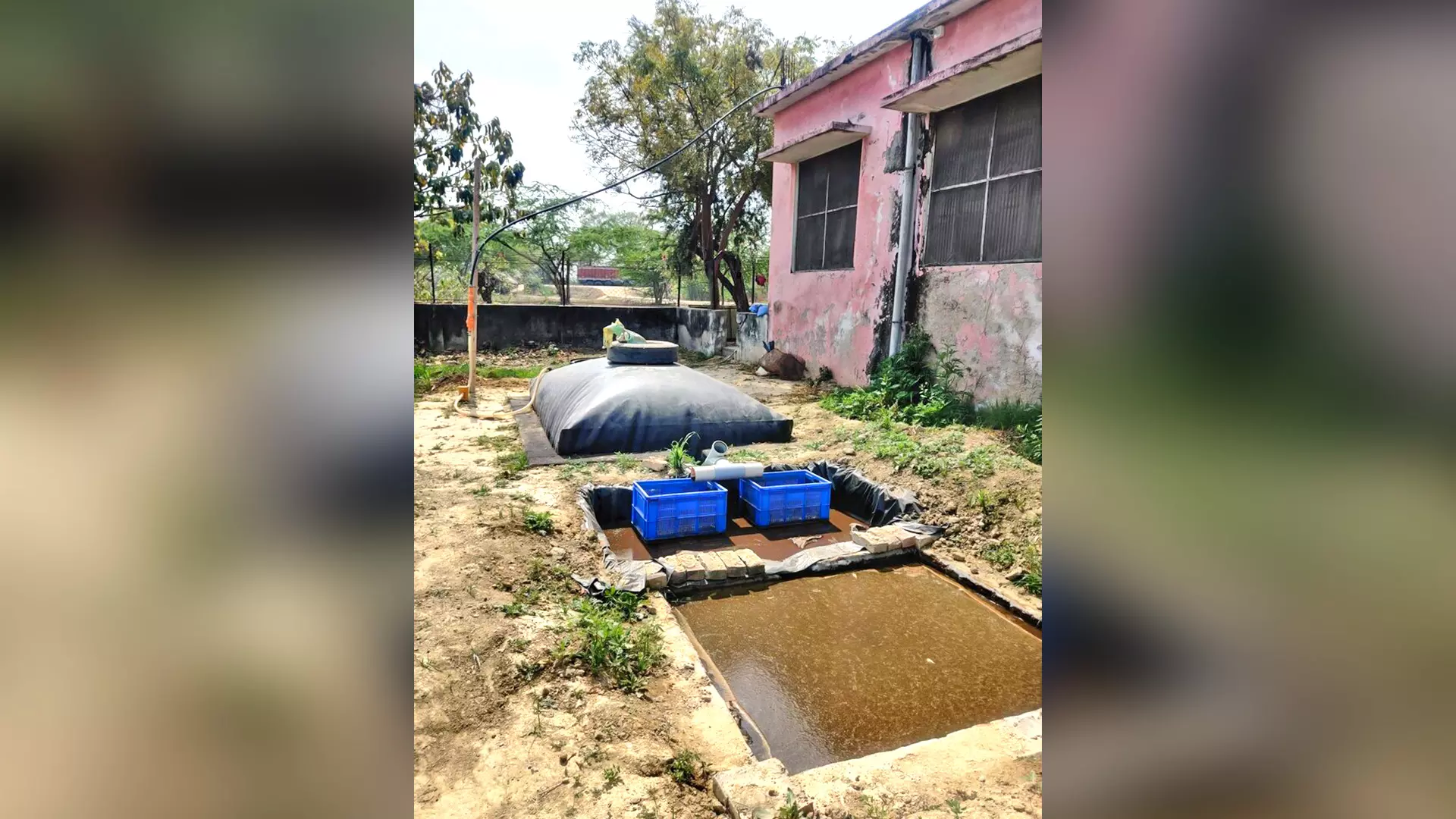
A biogas plant in Mukhuva village.
“The entire investment was recovered in less than a year by selling slurry and saving money on firewood or LPG that we at times bought from the neighbouring village. About 80 litres of slurry per day is generated as a byproduct that we sell as organic manure at Rs 1.75 to Rs 2.5 per litre. The NDDB has developed a slurry applicator with a 3,500 litres capacity for collection of slurry from our village. Payments for slurry sales are deposited directly into the beneficiaries’ bank accounts,” tells Rekhaben.
“I feel secure and confident as I generate my own income. I can dream of what to do next in life or take decisions about my children’s future now. I can think about providing them a bright future,” she adds.
